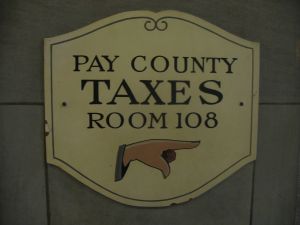 There have been a lot of recent changes in the tax laws surrounding dental practices and the space they occupy. We touched briefly on this last month but felt it deserved a more in depth look.
There have been a lot of recent changes in the tax laws surrounding dental practices and the space they occupy. We touched briefly on this last month but felt it deserved a more in depth look.
No matter what though, it is important to note that we can help you get through the whole new world of complexities surrounding these new tax laws if the task is just too daunting.
Tradition
What we have traditionally seen in the past is when a dentist who practices as an S Corporation wants to build a new dental practice would be for them to purchase the actual structure in a separate Limited Liability Corporation and lease the space to the dental practice to generate rental income.
This has been considered an excellent practice for a long time because it creates a legal separation of your assets to protect the dental practice office space.
With all the new changes in tax laws though this can now become a major tax headache. There is now a potential for large lost tax deductions for new construction offices because of this 2 entity structure.
This potential is created for the exact reason this used to be a good idea, because of the treatment of the rental LLC’s as a passive activity.
What’s New
Rental income is considered passive income. Nothing new with that. But whereas passive income used to be something good for your taxes it is now bad. Passive income is now subject to the new 3.8% Medicare surtax, which is in addition to any income taxes. See why it’s now a bad thing?
In most cases passive income losses can’t be used to offset income from from the dental practice or wages. Because of this, rental losses might not give you any tax benefits in this current year.
What You Can Do
If you are considering building a new dental office there are 2 separate steps that must be done to benefit from the large depreciation deductions available to dentists who construct new offices.
The new rules state the majority of building costs must be depreciated over 39 years. That is a long time to get your value back! It also creates little potential for any tax savings from building your own building.
Luckily for us, there are some legal precedents set by tax court cases, which enable dentists to segregate the costs of building components that are incurred directly for patient treatment. So your new, beautiful technology that we are going to pump that new office full of, can still get you a good sized break.
These components may be depreciated in as little as 5 to 7 years. By using a cost segregation study, dentists can reallocate as much as 25% to 40% of the building costs to rapid depreciation methods. But you must perform that first step and have a sophisticated cost segregation study performed.
However, if you do not perform step number 2 as well, the segregation study will be for nothing.
The all important second step is to have an aggregation election. An aggregation election is where a taxpayer who qualifies as a real estate professional can choose to combine all their interests in real estate endeavors for purposes of the passive activity rules in code section 469.
If you meet the requirements to aggregate, both your new building and your practice, can be viewed as one entity allowing you to take the large depreciation deductions in the LLC from cost segregation and use it to offset dental practice income, of course using the appropriate election.
The maze of taxes surrounding building a new office does not have to be something you take on your own shoulders. We are experts at planning. Let us help you with this and don’t put off building that new practice just because of those tax changes. We can still make the system work for you!
-Jason









